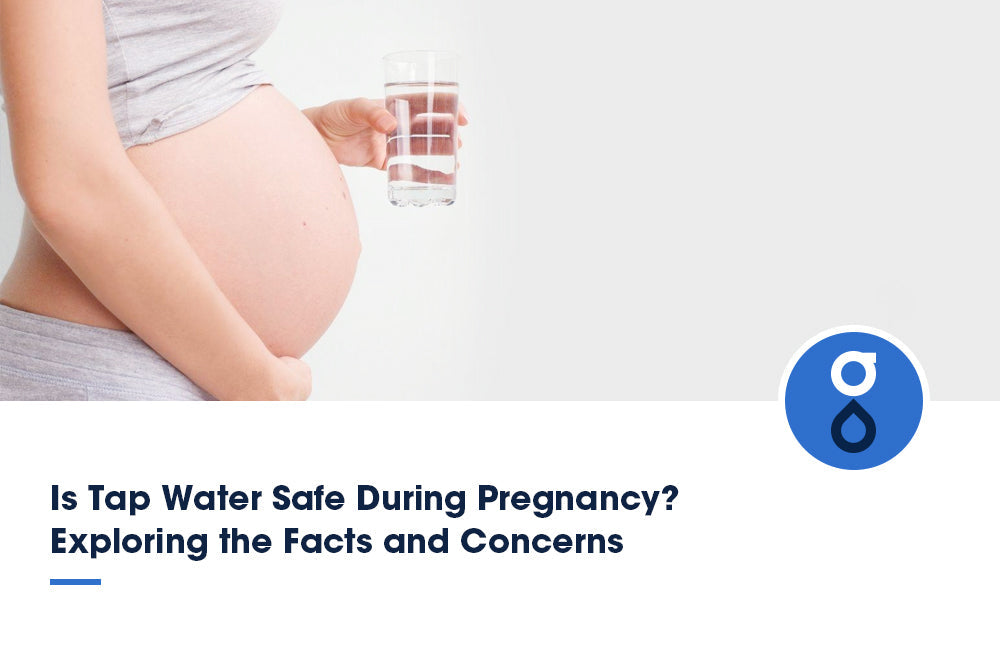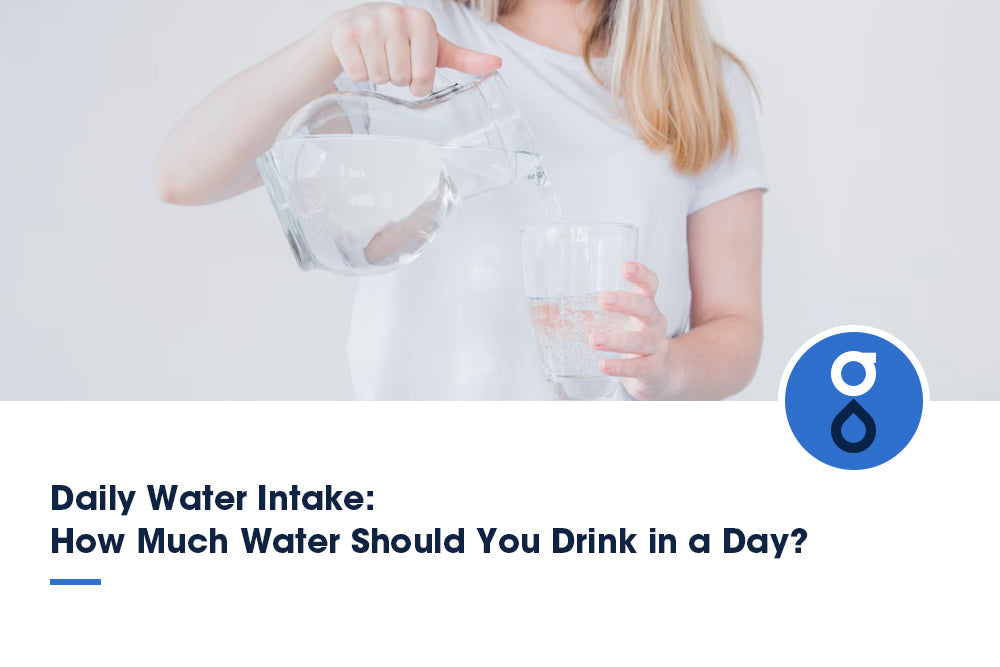Table of Contents:
Understanding microplastics
Sources of microplastics in bottled water
Risks of consuming bottled water with microplastics
Ways to reduce microplastic exposure in bottled water
Key considerations when you choose bottled water
Filtered water: the best alternatives of bottled water
FAQs
Conclusion
You've likely heard about the concern over microplastics in our oceans, but did you know they're also in the bottled water you drink? Yes, you read that right. Bottled water, which many consider a clean and healthy choice, might not be as pure as we think. These tiny particles of plastic, smaller than a sesame seed, are making their way into our bottled water and our bodies.
But how do they get there? What risks do they pose to our health? And most importantly, how can we reduce our exposure to them? In this article, we'll unravel the truth about microplastics in bottled water and share some key considerations you need to consider when choosing your water. We'll also explore the alternative of filtered water. So, please stick with us as we dive into this less-known issue affecting our health and environment.
Understanding Microplastics

You might've heard about microplastics, but do you know what they are and how they sneak into your bottled water? Microplastics are small plastic pieces, typically less than 5mm in size, that come from larger plastic items through a process called plastic degradation. This is when plastics break down into smaller pieces due to environmental conditions like sunlight or heat.
The environmental impact of microplastics is severe. They infiltrate marine ecosystems, causing harm to organisms that mistake them for food. These tiny plastic particles can absorb toxic chemicals, becoming even more dangerous when ingested by marine life.
But it's not just the oceans that are affected. Microplastics have found their way into our bottled water. Due to plastic degradation, microscopic particles break down and mingle with the water that's bottled for your consumption. This raises concerns about human health, as the long-term effects of ingesting microplastics are still largely unknown. Some studies shoowed that the total plastics found in brain matter increased 50% in the past 8 years.
So, the seemingly harmless bottled water you drink might carry hidden microplastics. It's high time we pay attention to this issue and strive for solutions to protect our health and the environment.
Sources of microplastics in bottled water
Ever wondered where those tiny plastic particles in your favorite beverage come from? There are several sources of microplastics in bottled water, and some might surprise you. First off, the plastic production process itself can lead to microplastic contamination. Tiny fragments can break off during manufacturing and end up in the product. Water bottling techniques also play a significant role. Microplastics can enter the water during bottling, especially if proper filtration systems aren't in place.
Furthermore, the water source may be contaminated with microplastics, leading to regional contamination differences. For instance, water bottled in areas with higher plastic pollution might contain more microplastics.
Microplastic detection methods have improved, allowing us to identify and quantify these particles in water. However, it's important to remember that even with advanced detection, not all microplastics might be detected due to their small size and varying densities.
Risks of consuming bottled water with microplastics
Consuming bottled water contaminated with microplastics poses significant risks to human health, the environment, and wildlife. Microplastics, tiny particles of plastic less than 5mm in size, have been found to have detrimental effects on living organisms. A study conducted by Orb Media analyzed 259 bottled water samples from 11 popular brands across nine different countries.
Shockingly, 93% of these samples were found to contain microplastic particles. This alarming discovery highlights the widespread presence of microplastics in bottled water, raising concerns about the potential health risks associated with their consumption.
Not only do microplastics introduce foreign materials into the human body, but they also act as carriers for toxic chemicals. When consumed, these harmful additives can leach into the water, leading to potential health issues. Furthermore, as plastic waste pollution continues to increase, the concentration of microplastics in bodies of water and, subsequently, in bottled water is expected to rise.
The risks of consuming bottled water with microplastics extend beyond human health. Microplastics can also have devastating effects on the environment and wildlife. These particles can accumulate in ecosystems, leading to disrupted food chains, impaired reproduction, and even mortality in marine life.
Ways to reduce microplastic exposure in bottled water
Filtering water with activated carbon
To reduce microplastic exposure in your bottled water, you can start by filtering it with activated carbon, which traps and removes harmful particles. Activated carbon is a highly porous form of carbon with a large surface area, allowing it to adsorb contaminants. When water passes through activated carbon filters, the carbon attracts and binds to microplastics, preventing them from entering the filtered water.
This method is particularly effective in removing smaller microplastics that may be present in bottled water. Additionally, activated carbon filters can also remove other impurities such as chlorine, odors, and flavors, improving the overall taste and quality of the water.
Using glass or stainless steel bottles

Glass or stainless steel bottles offer a reliable and eco-friendly alternative, ensuring a cleaner and safer drinking experience. Unlike plastic bottles, glass, and stainless steel do not contain harmful chemicals that can leach into the water. This means there is no risk of microplastic contamination from these materials.
Glass bottles are non-porous, making them easy to clean and preventing bacteria or mold growth. Stainless steel bottles are also a great option, as they are durable and can keep drinks hot or cold for longer periods.
Avoiding single-use plastic bottles
By avoiding single-use plastic bottles and opting for reusable alternatives, such as glass or stainless steel bottles, you can significantly reduce your exposure to microplastics in bottled water. Single-use plastic bottles significantly contribute to the microplastic pollution crisis, as they often break down into tiny particles in our water sources.
By switching to reusable bottles, you minimize your exposure to microplastics and help decrease the overall demand for single-use plastics. So, next time you reach for a bottle of water, consider investing in a reusable option and make a positive impact on our environment.
Opting for bottled water brands with microplastic testing
By choosing bottled water brands that undergo regular microplastic testing, consumers can be assured that they are making a conscious decision to support companies that prioritize the health and well-being of individuals and the environment. These brands understand the importance of ensuring their products are free from microplastic contamination and take proactive measures to verify their water quality.
Through rigorous testing, these companies can detect and eliminate any microplastic particles in their bottled water, reducing the risk of exposure for consumers. By opting for these brands, individuals can minimize their exposure to microplastics and contribute to the larger goal of reducing plastic pollution in our ecosystems.
Supporting policies and initiatives for plastic reduction

Supporting policies and initiatives that curb plastic pollution is crucial for preserving the health of our planet and ensuring a sustainable future for generations to come. Governments and organizations worldwide are taking steps to reduce plastic waste and its harmful environmental effects. One important initiative is the implementation of plastic reduction policies, such as bans on single-use plastics and promotion of reusable alternatives.
Additionally, it is essential to support campaigns that raise awareness about the impact of plastic pollution and encourage individuals to reduce their plastic consumption. Collaborating with businesses and industries to develop sustainable packaging solutions and encouraging the use of biodegradable materials are also vital in reducing plastic waste.
Key considerations when you choose bottled water

When you're on the hunt for a refreshing drink, there are a few key points you should keep in mind.
- Water brands: The brand of water you choose can significantly impact your health and the environment. Reputable water brands often adhere to strict bottled water regulations, ensuring the water is filtered and minimizing microplastic contaminations. However, it's essential to do some research as not all brands are transparent about their filtration processes.
- Packaging: Packaging impact is another crucial consideration. Some brands use plastics known to leach harmful chemicals into the water. Opt for brands that use BPA-free plastics or, even better, glass bottles to reduce your exposure to harmful substances.
- Sustainability: Sustainability concerns should also be at the forefront of your choices. Consider brands committed to reducing their carbon footprint through initiatives such as recycling programs or using renewable energy in their production processes.
-Health impacts: Health aspects are not limited to the water itself. The impact of microplastics on our bodies is still not fully understood; therefore, limiting your exposure where possible is prudent. Always remember, your choices matter, not just for your health but for the planet as well.
Filtered water: the best alternatives of bottled water
After dissecting the key considerations when choosing bottled water, it's clear there's more than meets the eye. But don't fret; there are safer and more sustainable options available. Now, let's delve into filtered water and examine some of the best alternatives to bottled water. One of the most effective solutions is investing in water purifiers.
These devices, often equipped with glass water filter pitchers, can significantly reduce the presence of harmful substances, including microplastics. Using activated carbon, these filters can absorb unwanted particles and provide cleaner, safer water.
Consider a reverse osmosis system if you're looking for something even more comprehensive. This technology forces water through a semi-permeable membrane, effectively removing most contaminants. Distilled water is another reliable alternative. It's produced by boiling water and collecting the steam, which leaves behind impurities.
For an extra layer of safety, UV disinfection can be used. This process destroys harmful microbes, ensuring your water is free from bacteria and viruses. So, while bottled water may seem convenient, remember that sustainable, safer options are at your fingertips.
FAQs
How do microplastics in bottled water compare to microplastics in tap water?
Microplastics in bottled water tend to be higher compared to tap water. Studies have shown that, on average, bottled water contains twice as many microplastics as tap water, raising concerns about potential health risks.
Do different types of plastic bottles release different amounts of microplastics into the water?
Different types of plastic bottles do not release different amounts of microplastics into the water. The release of microplastics is primarily influenced by factors such as storage conditions, temperature, and the bottle's age.
Can microplastics in bottled water be filtered out using common water filtration systems?
Microplastics in bottled water cannot be effectively filtered out using standard water filtration systems. This poses a concern as these tiny particles may still be present in the water we consume.
Conclusion
You've discovered the truth about microplastics in bottled water. It's vital to be mindful of the water you're drinking and its potential risks. Not all bottled water is equal, and filtered water is often a safer alternative. By making informed choices, you're not only protecting your health but also helping to reduce plastic pollution. So, take action today for a healthier tomorrow!

















